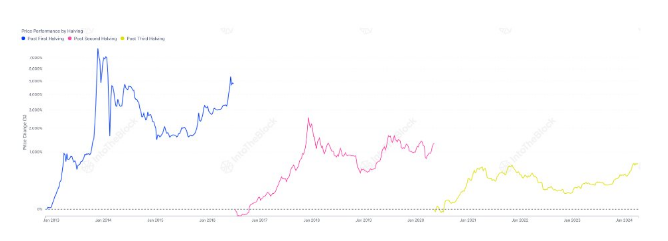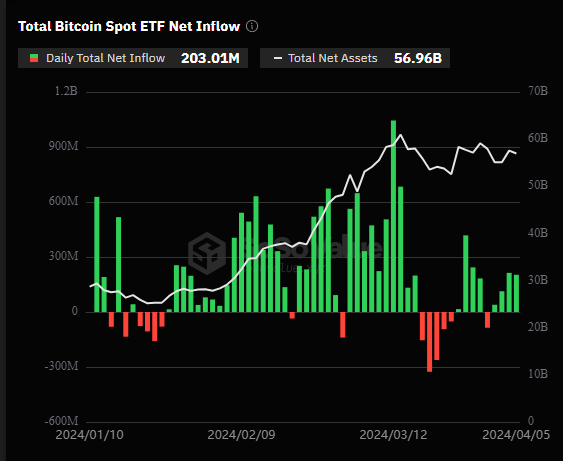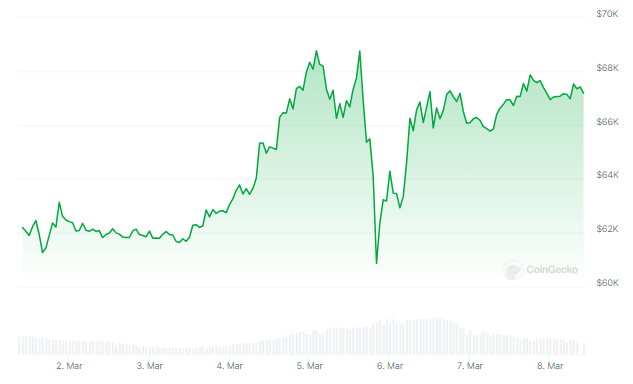A crypto analyst has made a bold prediction about Bitcoin, anticipating that the pioneer cryptocurrency could surge to $650,000 as the Spot Bitcoin ETF market continues to grow.
BTC’s Next Price Target Expected At $650,000
In an X (formerly Twitter) post published on Monday, Willy Woo, a popular analyst and crypto expert with over 1 million followers, predicted Bitcoin’s next price target, fueled by the growth and demand of Spot Bitcoin ETFs.
According to Woo, Spot Bitcoin ETFs could propel the price of BTC to $91,000 at bear market bottoms, while during bull market tops, the cryptocurrency could skyrocket as high as $650,000. It’s important to note that at the time of writing, Bitcoin haD not even reached $100,000, and is trading at $63,408, according to CoinMarketCap.
Woo has explained that BTC’s surge to this exponential level can only be possible when ETF investors completely utilize their capital. He highlights that a total capital deployment typically takes time, emphasizing that his price predictions are not constrained to the current crypto market cycle.
The crypto analyst also predicted that BTC will eventually flip gold’s market capitalization as the asset manager’s capital is deployed. Basing his forecast on gold’s 12-year bull run after the launch of its ETF, Woo disclosed that Bitcoin could have a similar bullish trend soon.
How Bitcoin Will Surge To $650,000
To efficiently explain his predictions, Woo provided a brief but clear insight into the potential impact Spot Bitcoin ETFs could have on the price of Bitcoin. He provided “back-to-envelope calculations” that could be used to fully understand how BTC could surge to $650,000.
During his calculations, the crypto analyst estimated the total capital managed by asset managers at $100 trillion. He mentioned that the current allocation recommendation was 2% for Bitcoin, and given the total amount of assets managed, it would mean $2 trillion could potentially flow into BTC.
Presently, Bitcoin holds about $561,159,959 of investments that can be measured on-chain. By adding the potential inflow from asset managers, the total investment in BTC would rise to $2.56 trillion.
Woo also introduced a Market Value to Realized Value (MVRV) ratio, which compares the total market capitalization of Bitcoin to the amount of funds invested into it. The crypto analyst claimed that historically, this ratio usually surges by 5x during bull market tops and by 0.7x during bear market bottoms.
Based on this ratio, Woo calculated the potential market capitalization of BTC, estimating a price of $12.8 trillion during bull tops and $1.8 trillion during bear bottoms. Dividing this total market capitalization by the amount of Bitcoin in circulation would position BTC’s price per coin at $650,000 and $91,000 respectively.


